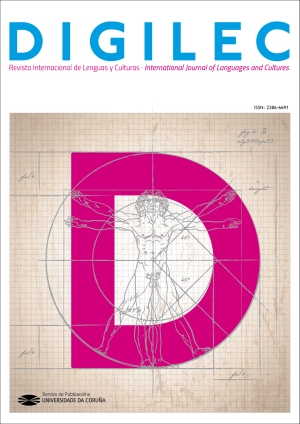Linking words and writing at University
Main Article Content
Abstract
It is common for native speakers of any language to convey ideas that reflect their opinion on a certain topic, be it through speaking or in writing. However, they sometimes struggle to make conscious use of the discourse, argumentative and grammatical elements that play a role in creating a coherent message as verbal activity. That is why, when teaching and guiding writing tasks in the classroom, teachers should put an emphasis on the usage and application of a range of different elements that come together and intertwine in a text. We refer, in particular, to text organizers known as connectors. Given the difficulties identified in texts written in Spanish as a mother tongue by our students of first year at university pursuing different degrees, we have carried out an analysis in order to determine the strategies to apply in our classroom. We have identified similar problems. Among these, we can mention the following: mistakes in the word choice and syntax order in the logical layout of paragraphs and sentences as a consequence of wrong choice of connector or its omission altogether. With the aim of maximizing our focus in this paper, we have chosen to zoom in on the performance of one university student, since this case is representative of his classmates’ writing. This analysis should help us select the contents to teach and design an educational proposal.
Keywords:
Downloads
Article Details
References
Adam, J. M. (1992). Les textes. Types et prototypes. Nathan.
Blakemore, D. (2002). Relevance and Linguistic Meaning: The Semantics and Pragmatics of Discourse Markers. Cambridge University Press.
Bronckart, J. P. (1997/2004). Actividad verbal, textos y discursos. Por un interaccionismo socio-discursivo. Fundación Infancia y Aprendizaje.
Bronckart, J. P. (2007). Desarrollo del lenguaje y didáctica de las lenguas. Miño y Dávila.
Ducrot, O. (1980). Analyses Pragmatiques. Communications. Minuit.
Ducrot, O. (1980). Analyses Pragmatiques. Communications. Minuit.
García Mejía, K. P. y Alarcón Neve, L. J. (2015). ¿Cómo conectan los jóvenes escolares sus ideas para argumentar? Análisis del uso de conectores en su discurso. Entreciencias: diálogos en la Sociedad del Conocimiento, 3(7), 253-262.
García Mejía, K. P. y Alarcón Neve, L. J. (2015). ¿Cómo conectan los jóvenes escolares sus ideas para argumentar? Análisis del uso de conectores en su discurso. Entreciencias: diálogos en la Sociedad del Conocimiento, 3(7), 253-262.
Goicoechea, M. V. (2013). Cómo trabajar la lectura y la escritura con alumnos ingresantes a la universidad [CD]. En D. Riestra, S. M. Tapia y M. V. Goicoechea (Comps.). Terceras Jornadas Internacionales de Investigación y Prácticas en Didácticas de las Lenguas y las Literaturas (pp. 526-542). E-book Ediciones GEISE.
Jakubinskij, L. (2018). Sobre el habla dialogal. Editorial de la Universidad Nacional de Río Negro.
Portolés, J. (1993). La distinción entre los conectores y otros marcadores del discurso en español. Verba. Anuario Galego de Filoloxía, 20, 141-170.
Redeker, G. (1991). Linguistic markers of discourse structure. Linguistics, 29, 39-72.
Ribas Seix¸ T., Rodríguez Gonzalo, C. y Durán, C. (2020). El aprendizaje de la escritura de textos de opinión en alumnos de Primaria: análisis de la actividad metalingüística, de los conceptos sobre la escritura y de los productos finales. Indagatio Didactica, 12(2), 33-54. https://doi.org/10.34624/id.v12i2.17436
Riestra, D. (2006). Usos y formas de la lengua escrita. Reenseñar la escritura a los jóvenes. Un puente entre el secundario y la universidad. Novedades Educativas.
Riestra, D., Goicoechea, M. V. y Tapia, S. M. (2014). Los géneros textuales en secuencias didácticas de lengua y literatura. NoveducLibros.
Riestra, D. y Goicoechea, M. V. (Comps.) (2022). Los modelos teóricos y los modelos didácticos en las propuestas de enseñanza de lenguas y literaturas. Editorial de la URNR.
Rodríguez Hernández, B. A. (2020). Los conocimientos de los alumnos de primaria sobre la argumentación escrita. IE Revista de Investigación Educativa de la REDIECH, 11, e834. http://dx.doi.org/10.33010/ie_rie_rediech.v11i0.834
Rodríguez Hernández, B. A. y García Valero, L. B. (2015). Escritura de textos académicos: dificultades experimentadas por escritores noveles y sugerencias de apoyo. Revista de Investigación Educativa, 20, 249-265.
Schneuwly, B. Rosat, M. C. y Dolz, J. (1989). Les organisateurs textuels dans quatre types de textes écrits. Etude chez des élèves de dix, douze et quatorze ans. Langue Française, 81, 40-58.


